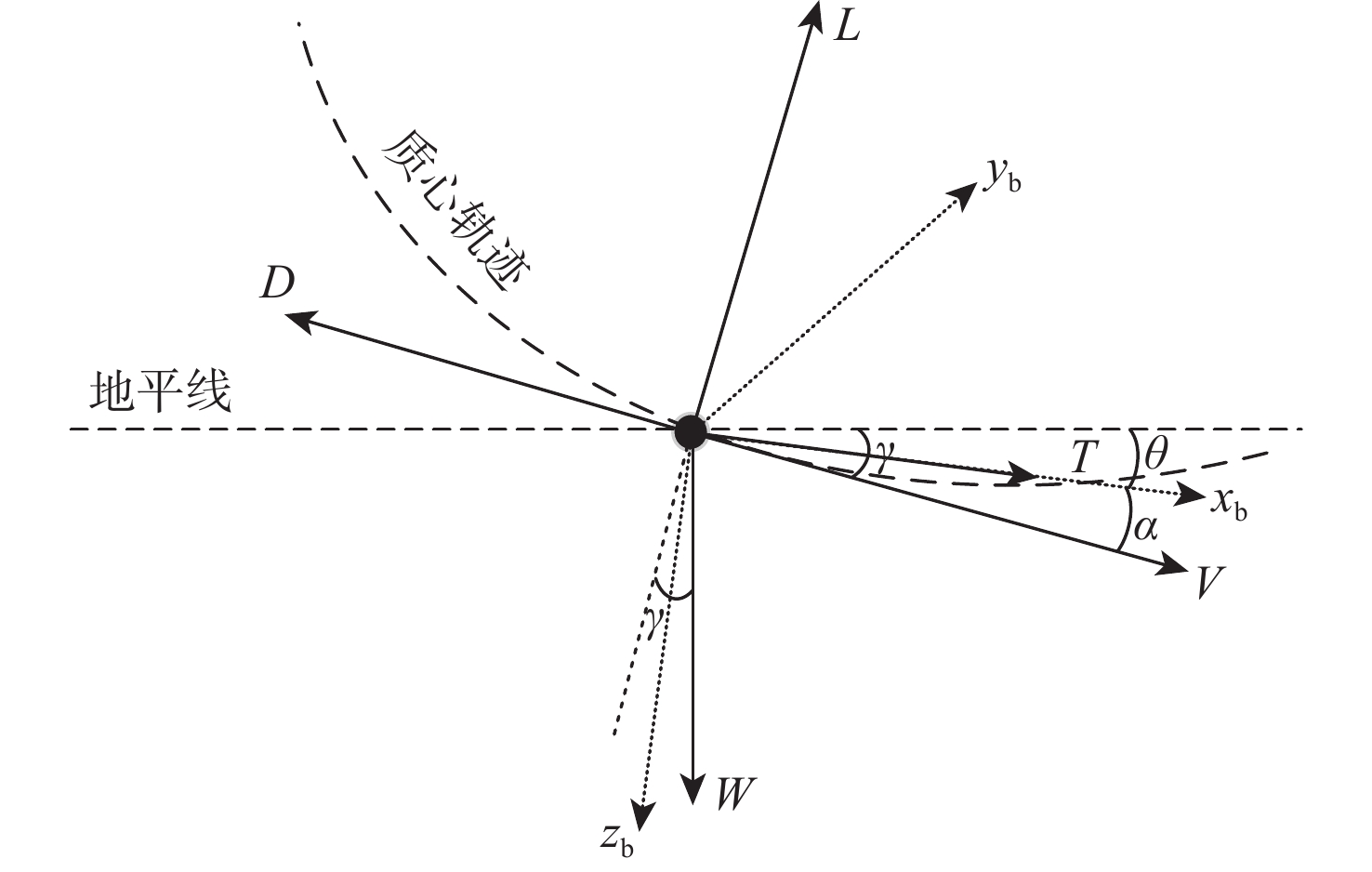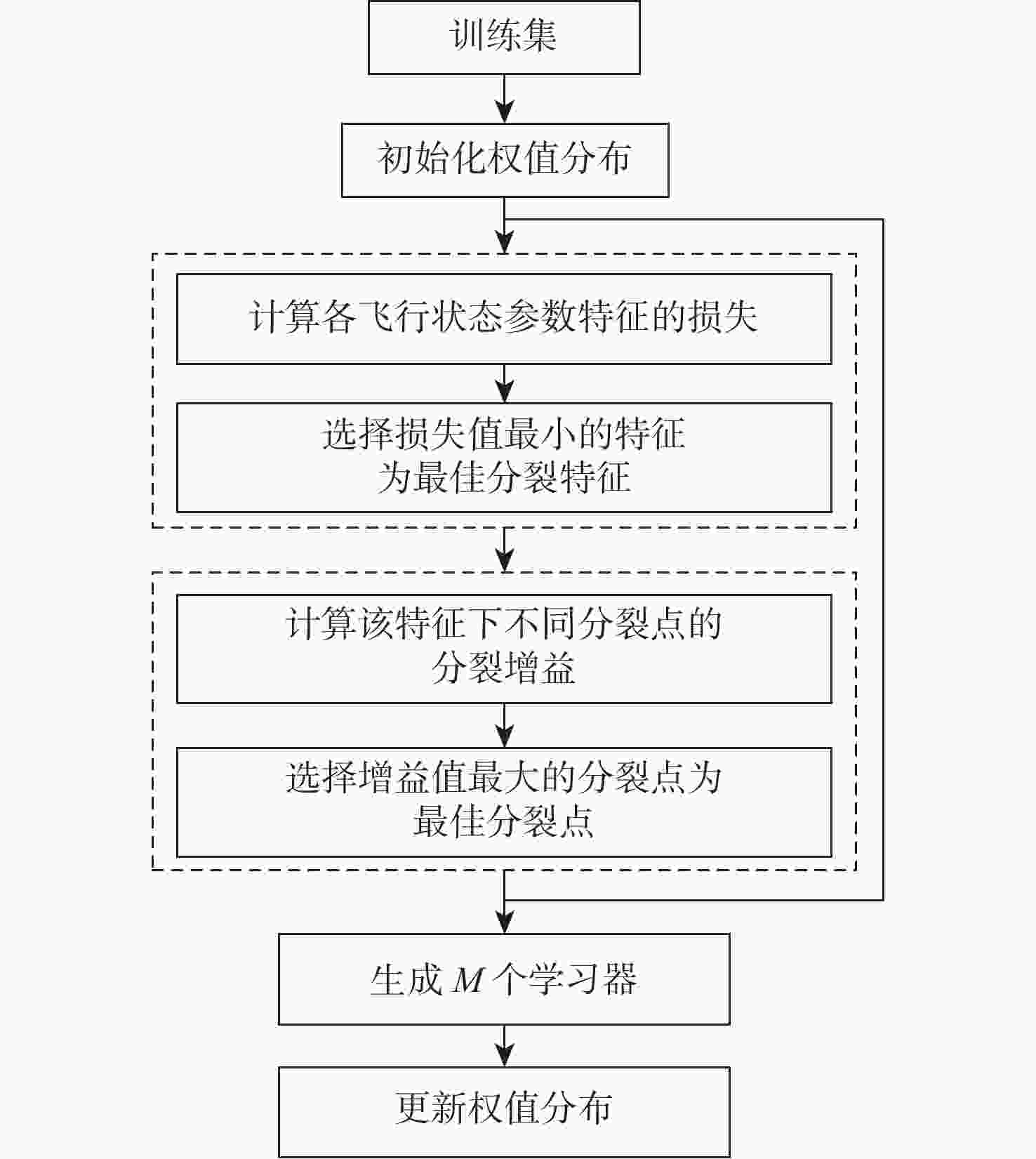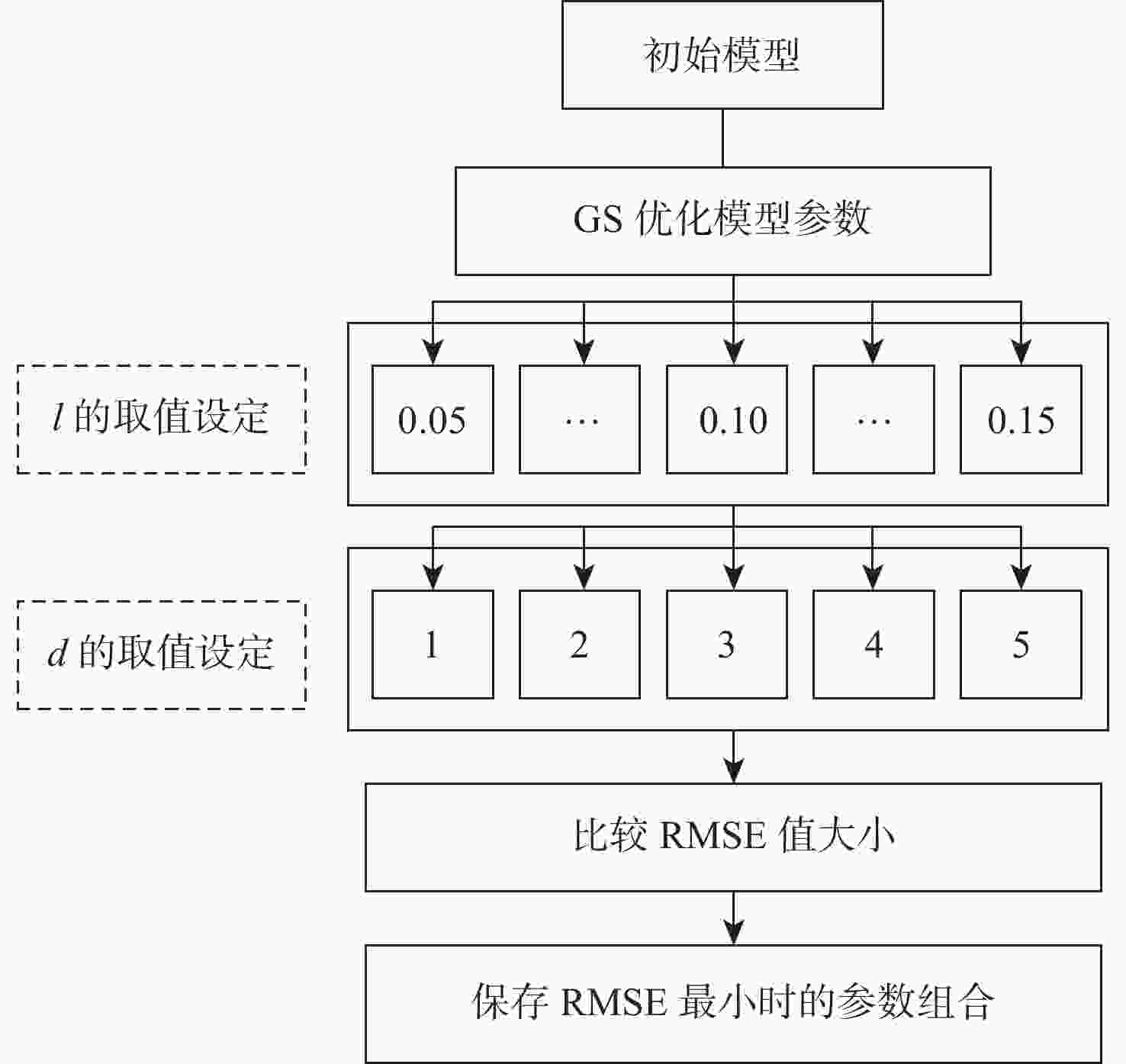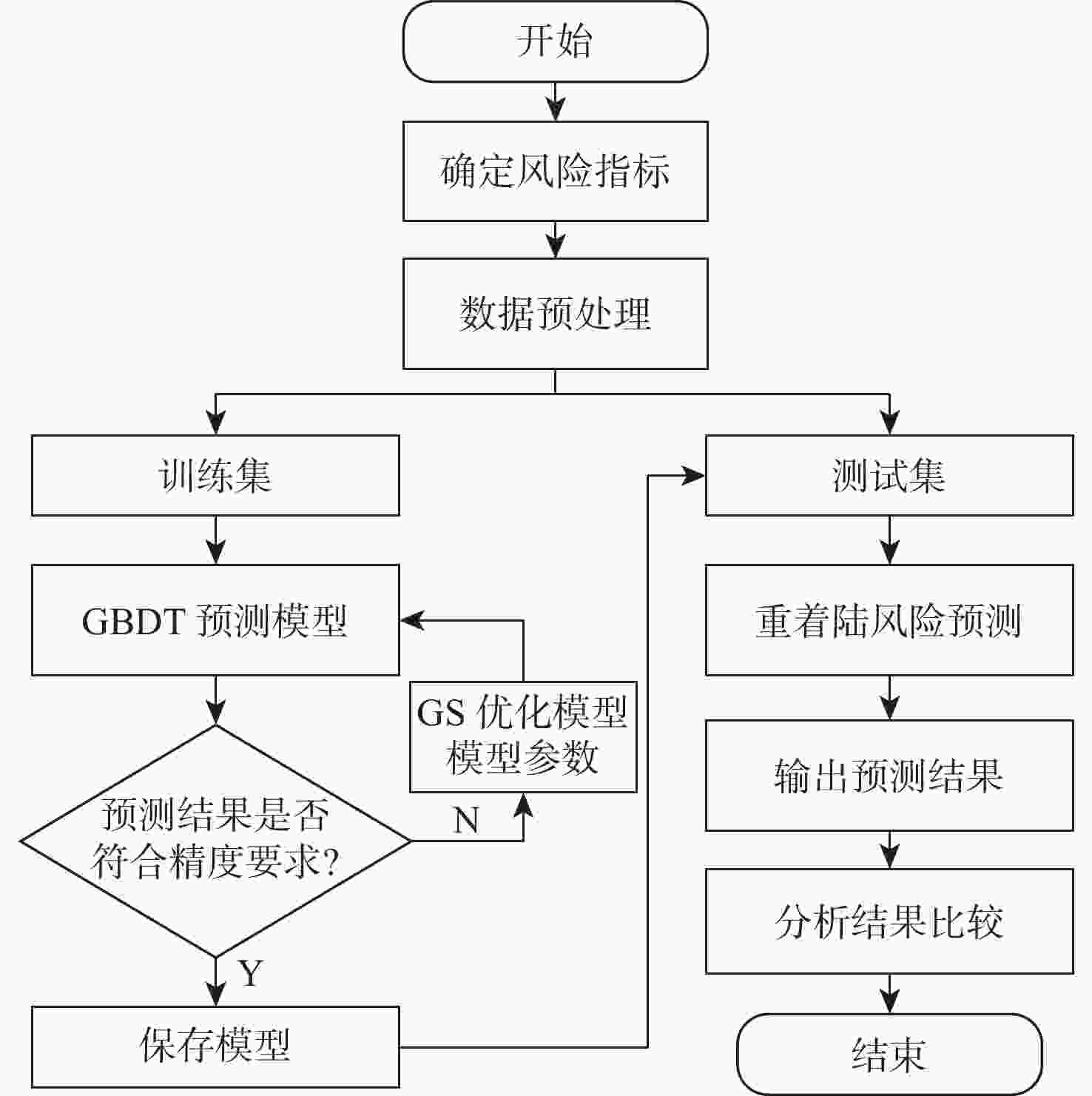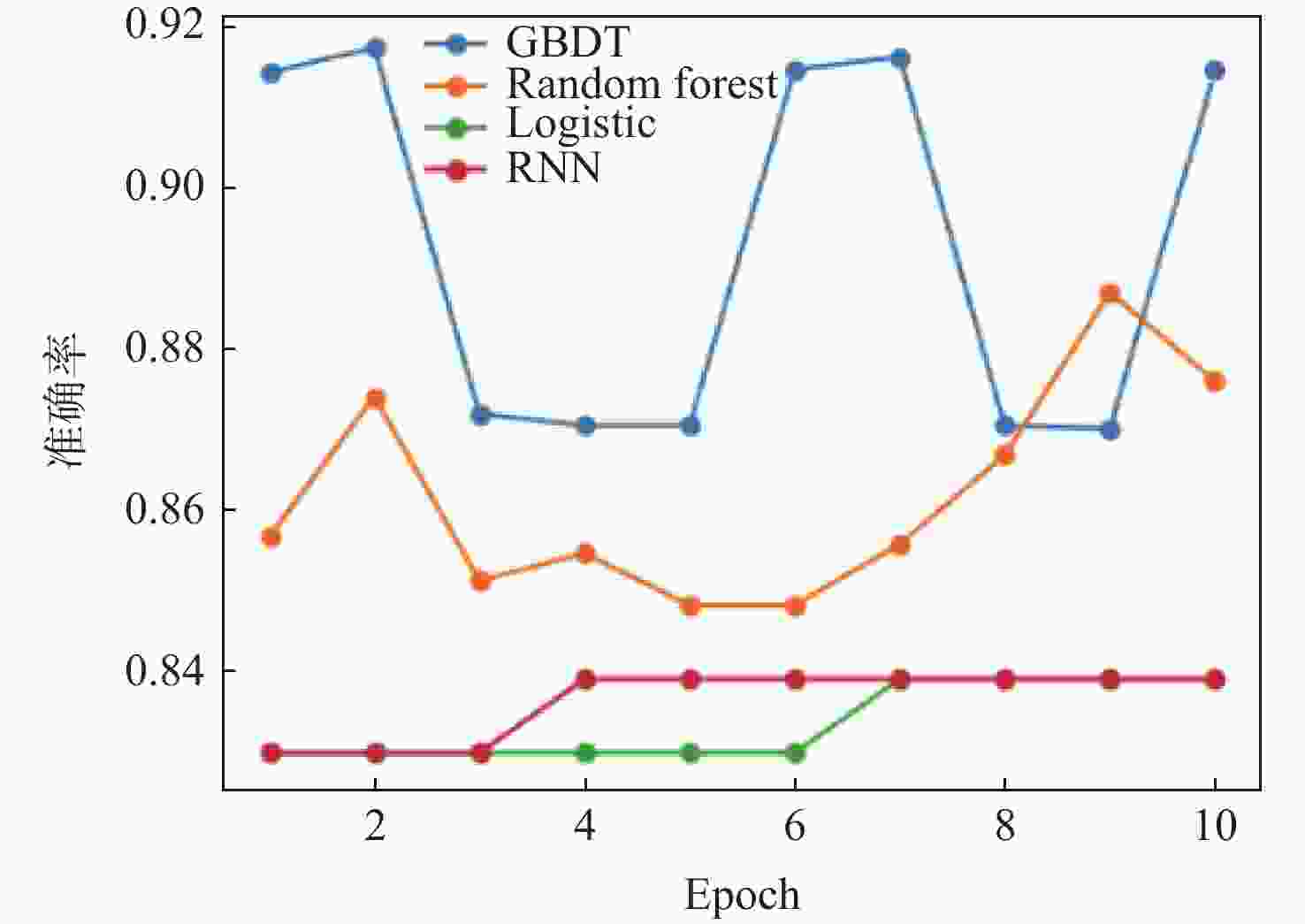-
摘要:
重着陆可能造成机体结构损伤等征候事件,甚至机毁人亡飞行事故。针对当前重着陆风险评估缺乏物理本质剖析,为有效实施重着陆风险识别和等级判据,以便提高飞行员着陆操作品质,结合飞行状态分析,基于梯度提升决策树(GBDT)算法和网格搜索(GS)法构建重着陆风险预测模型。通过飞机受力分析并构建着陆飞行运动学方程,确定与重着陆关系密切的5项飞行状态参数;从机载快速存取记录器(QAR)记录的数据中提取飞行状态数据构建数据集,并根据QAR参数特征,通过GBDT算法构建重着陆风险预测模型,并利用GS优化模型参数;以某航空公司 “成都-沈阳”航线运行为例,选取530个QAR数据对该模型进行训练和测试,并与随机森林、Logistic多元回归、循环神经网络(RNN)等算法结果比较。结果表明:GBDT-GS方法在预测重着陆风险方面的性能较其他算法优异,预测准确率达到92%,验证了所建模型的客观有效性。
Abstract:Hard landing may cause structural damage of aircraft or other potential accident causes and even crash and fatal flight accidents. In view of the lack of physical nature analysis in current hard landing risk assessment, combined with flight status analysis, a hard landing risk prediction model based on gradient boosting decision tree (GBDT) and grid search (GS) was proposed to effectively implement hard landing risk identification and grade criteria and improve pilots’ landing operation quality. Firstly, the flight kinematics equation of landing was established through the force analysis of aircraft, and five flight status parameters closely related to hard landing were determined. Then, flight status data was extracted from onboard quick access recorder (QAR) data to construct a data set. According to QAR parameter characteristics, the hard landing risk prediction model was constructed by the GBDT algorithm, and model parameters were optimized by GS. Finally, taking the Chengdu-Shenyang route operation of an airline as an example, the study selected 530 pieces of QAR data to train and test the model and compared the result of the model with those of random forest, recurrent neural networks (RNN), and Logistic multiple regression. The results show that the GBDT-GS method is better than other algorithms in predicting hard landing risk, and its prediction accuracy reaches 92%, which verifies the objective validity of the constructed model.
-
Key words:
- flight status /
- hard landing /
- risk prediction /
- QAR data /
- gradient boosting decision tree
-
表 1 飞行数据样本的数据化处理
Table 1. Data processing of flight data samples
接地载荷 样本状态 标签 VRTG > 1.75G 高风险 3 1.6G < VRTG < 1.75G 中风险 2 1.5G < VRTG < 1.6G 低风险 1 VRTG < 1.5G 无风险 0 注:G表示飞机“过载”。 表 2 数据集样本(部分)
Table 2. Data set sample (partial)
样本 x1/m x2/(m·s−1) x3/(m·s−1) x4/(°) x5/(°) 标签 1 14.32 67.39 −1.204 2.81 0 0 2 14.63 69.45 −1.219 3.52 −1.32 0 3 15.24 69.45 −1.300 6.33 −2.46 0 4 13.72 72.02 −1.382 2.98 −2.46 1 5 19.51 70.48 −2.753 1.41 0 3 6 14.93 70.48 −1.529 4.20 0.40 0 529 18.29 68.42 −1.544 2.30 0.40 2 530 15.85 69.45 −1.199 3.46 1.05 0 表 3 不同参数下的预测性能(部分)
Table 3. Prediction performance under different parameters (partial)
参数 ACC RMSE MAE MSE [200, 0.05, 1] 0.8681 0.1258 0.4196 0.1761 [200, 0.05, 5] 0.8698 0.1592 0.4692 0.2213 [200, 0.10, 3] 0.8864 0.1698 0.5200 0.2704 [200, 0.10, 4] 0.9185 0.1195 0.4121 0.1635 [200, 0.10, 5] 0.8754 0.2076 0.5551 0.3082 [200, 0.15, 1] 0.8658 0.2516 0.5379 0.2893 [200, 0.15, 5] 0.8750 0.2138 0.56078 0.3145 表 4 4种算法预测性能对比
Table 4. Comparison of prediction performance among four algorithms
算法 ACC RMSE MAE MSE GBDT-GS 0.9185 0.1195 0.4121 0.1635 随机森林 0.8868 0.1232 0.4404 0.1824 Logistic多元回归 0.8389 0.1384 0.4889 0.2390 RNN 0.8389 0.1321 0.4692 0.2203 表 5 “成都-沈阳”航段近期QAR数据
Table 5. Recent QAR data of Chengdu-Shenyang segment
样本 x1/m x2/(m·s−1) x3/(m·s−1) x4 x5 风险等级 1 15.85 70.28 −0.518 4.60 −0.35 0 2 17.68 70.93 −1.463 4.22 −1.05 0 3 16.76 69.19 −0.833 4.92 0 0 25 23.16 73.89 −2.946 −1.10 −0.35 3 26 14.93 69.79 −1.488 4.04 0 0 49 16.76 70.74 −1.951 3.03 4.22 1 50 16.46 69.98 −0.523 4.13 0 0 -
[1] International Civil Aviation Organization. Aircraft operations[M]. 5th ed. Montreal: International Civil Aviation Organization, 2006. [2] The Boeing Company. Statistical summary of commercial jet airplane accidents: worldwide operations | 1959-2024[R]. Chicago: The Boeing Company, 2025. [3] International Air Transport Association. IATA safety report 2018[R]. Montreal: International Air Transport Association, 2019. [4] 王冉. 基于飞行数据的颠簸飞行状态估计初步研究[D]. 南京: 南京亚洲成人在线一二三四五六区, 2020.WANG R. Preliminary study on bumpy flight state estimation based on flight data[D]. Nanjing: Nanjing University of Aeronautics and Astronautics, 2020(in Chinese). [5] 汪磊, 孙瑞山, 吴昌旭, 等. 基于飞行QAR数据的重着陆风险定量评价模型[J]. 中国安全科学学报, 2014, 24(2): 88-92.WANG L, SUN R S, WU C X, et al. A flight QAR data based model for hard landing risk quantitative evaluation[J]. China Safety Science Journal, 2014, 24(2): 88-92(in Chinese). [6] SARTOR P, BECKER W, WORDEN K, et al. Bayesian sensitivity analysis of flight parameters in a hard-landing analysis process[J]. Journal of Aircraft, 2016, 53(5): 1317-1331. doi: 10.2514/1.C032757 [7] 聂磊, 黄圣国, 舒平, 等. 基于支持向量机(SVM)的民用飞机重着陆智能诊断研究[J]. 中国安全科学学报, 2009, 19(7): 149-153.NIE L, HUANG S G, SHU P, et al. Intelligent diagnosis for hard landing of aircraft based on SVM[J]. China Safety Science Journal, 2009, 19(7): 149-153(in Chinese). [8] 许桂梅, 黄圣国. 应用LS-SVM的飞机重着陆诊断[J]. 系统工程理论与实践, 2010, 30(4): 763-768.XU G M, HUANG S G. Airplane’s hard landing diagnosis using LS-SVM[J]. Systems Engineering-Theory & Practice, 2010, 30(4): 763-768(in Chinese). [9] 曹海鹏, 舒平, 黄圣国. 基于神经网络的民用飞机重着陆诊断技术研究[J]. 计算机测量与控制, 2008, 16(7): 906-908.CAO H P, SHU P, HUANG S G. Study of aircraft hard landing diagnosis based on nerual network[J]. Computer Measurement & Control, 2008, 16(7): 906-908(in Chinese). [10] 于健, 董健康, 李佳. 基于神经网络的飞机着陆垂直载荷大诊断技术研究[J]. 中国民航飞行学院学报, 2010, 21(4): 16-18.YU J, DONG J K, LI J. Research on large diagnosis technology of aircraft landing vertical load based on neural network[J]. Journal of Civil Aviation Flight University of China, 2010, 21(4): 16-18(in Chinese). [11] 郑薇. 基于QAR数据的重着陆风险评估及预测研究[D]. 天津: 中国民航大学, 2014.ZHENG W. Research on risk assessment and prediction of heavy landing based on QAR data[D]. Tianjin: Civil Aviation University of China, 2014(in Chinese). [12] 周进. 基于熵权TOPSIS的飞机重着陆风险因素排序[J]. 河南科技, 2019, 38(19): 106-110.ZHOU J. Risk factors sequencing of aircraft hard landing based on entropy weight and topsis method[J]. Henan Science and Technology, 2019, 38(19): 106-110(in Chinese). [13] 汪磊, 郭世广, 任勇. 基于飞行数据正态云的着陆操作风险评价方法[J]. 安全与环境学报, 2019, 19(5): 1555-1561.WANG L, GUO S G, REN Y. Landing operation risk evaluation based on the normal cloud of the flight data[J]. Journal of Safety and Environment, 2019, 19(5): 1555-1561(in Chinese). [14] 孙瑞山, 张思远, 汪磊. 基于统计过程控制的QAR数据风险预测方法[J]. 统计与决策, 2015, 31(21): 33-36.SUN R S, ZHANG S Y, WANG L. QAR data risk prediction method based on statistical process control[J]. Statistics & Decision, 2015, 31(21): 33-36(in Chinese). [15] 郑磊, 池宏, 许保光, 等. 飞机重着陆预警分析方法[J]. 数学的实践与认识, 2019, 49(3): 56-72.ZHENG L, CHI H, XU B G, et al. Method of early warning analysis for aircraft hard landing[J]. Mathematics in Practice and Theory, 2019, 49(3): 56-72(in Chinese). [16] 陈思, 孙有朝, 郑敏. 基于支持向量机的飞机重着陆风险预警模型[J]. 兵器装备工程学报, 2019, 40(9): 154-158.CHEN S, SUN Y C, ZHENG M. Heavy landing risk pre-warning model based on support vector machine[J]. Journal of Ordnance Equipment Engineering, 2019, 40(9): 154-158(in Chinese). [17] 阙向东. 飞机飞行状态估计与飞行品质评估研究[D]. 西安: 西北工业大学, 2004.QUE X D. Research on aircraft flight state estimation and flight quality evaluation[D]. Xi’an: Northwestern Polytechnical University, 2004(in Chinese). [18] 耿建中, 姚海林. 基于UKF的飞机飞行状态估计[C]//2008系统仿真技术及其应用学术会议论文集. 合肥: 中国科学技术大学出版社, 2008: 68-71.GENG J Z, YAO H L. Aircraft flight state estimation based on unscented Kalman filter[C]//Proceedings of the 2008 Academic Conference on System Simulation Technology and Applications. Hefei: Press of University of Science and Technology of China, 2008: 68-71(in Chinese). [19] COOMBES M, LIU C J, CHEN W H. Situation awareness for UAV operating in terminal areas using bearing-only observations and circuit flight rules[C]//Proceedings of the American Control Conference. Piscataway: IEEE Press, 2016: 479-485. [20] 孙禾. 航空器飞行状态预测方法研究[D]. 天津: 中国民航大学, 2014.SUN H. Research on prediction method of aircraft flight state[D]. Tianjin: Civil Aviation University of China, 2014(in Chinese). [21] RAOL J, JATEGAONKAR R. Aircraft parameter estimation using recurrent neural networks—A critical appraisal[C]//Proceedings of the 20th Atmospheric Flight Mechanics Conference. Reston: AIAA, 1995. [22] LI L S, GARIEL M, HANSMAN R J, et al. Anomaly detection in onboard-recorded flight data using cluster analysis[C]//Proceedings of the IEEE/AIAA 30th Digital Avionics Systems Conference. Piscataway: IEEE Press, 2011: 1-31. [23] LEE H, PURANIK T G, FISCHER O P, et al. Flight data driven system identification using neural networks for landing safety assessment[C]//Proceedings of the IEEE/AIAA 40th Digital Avionics Systems Conference. Piscataway: IEEE Press, 2021: 1-9. [24] 王晴昊, 胡剑波, 姚登凯. STPA在进近着陆飞行安全分析中的研究及应用[J]. 系统工程理论与实践, 2018, 38(10): 2703-2712.WANG Q H, HU J B, YAO D K. Research and application of STPA to flight safety analysis in approach and landing[J]. Systems Engineering-Theory & Practice, 2018, 38(10): 2703-2712(in Chinese). [25] 刘琼, 张豹. 基于GBDT算法的锂电池剩余使用寿命预测[J]. 电子测量与仪器学报, 2022, 36(10): 166-172.LIU Q, ZHANG B. Remaining useful lifetime prediction for lithiumbattery based on GBDT algorithm[J]. Journal of Electronic Measurement and Instrumentation, 2022, 36(10): 166-172(in Chinese). [26] FRIEDMAN J H. Greedy function approximation: a gradient boosting machine[J]. The Annals of Statistics, 2001, 29(5): 1189-1232. [27] 奉国和. SVM分类核函数及参数选择比较[J]. 计算机工程与应用, 2011, 47(3): 123-124.FENG G H. Parameter optimizing for support vector machines classification[J]. Computer Engineering and Applications, 2011, 47(3): 123-124(in Chinese). [28] 中国民用航空局. 飞行品质监控(FOQA)实施与管理: AC-121/135-FS-2012-45R1[S]. 北京: 中国民用航空局飞行标准司, 2015-06-30.Civil Aviation Administration of China. Implementation and management of flight quality control (FOQA): AC-121/135-FS-2012-45R1[S]. Beijing: Flight Standards Department of Civil Aviation Administration of China, 2015-06-30. -







 下载:
下载:
